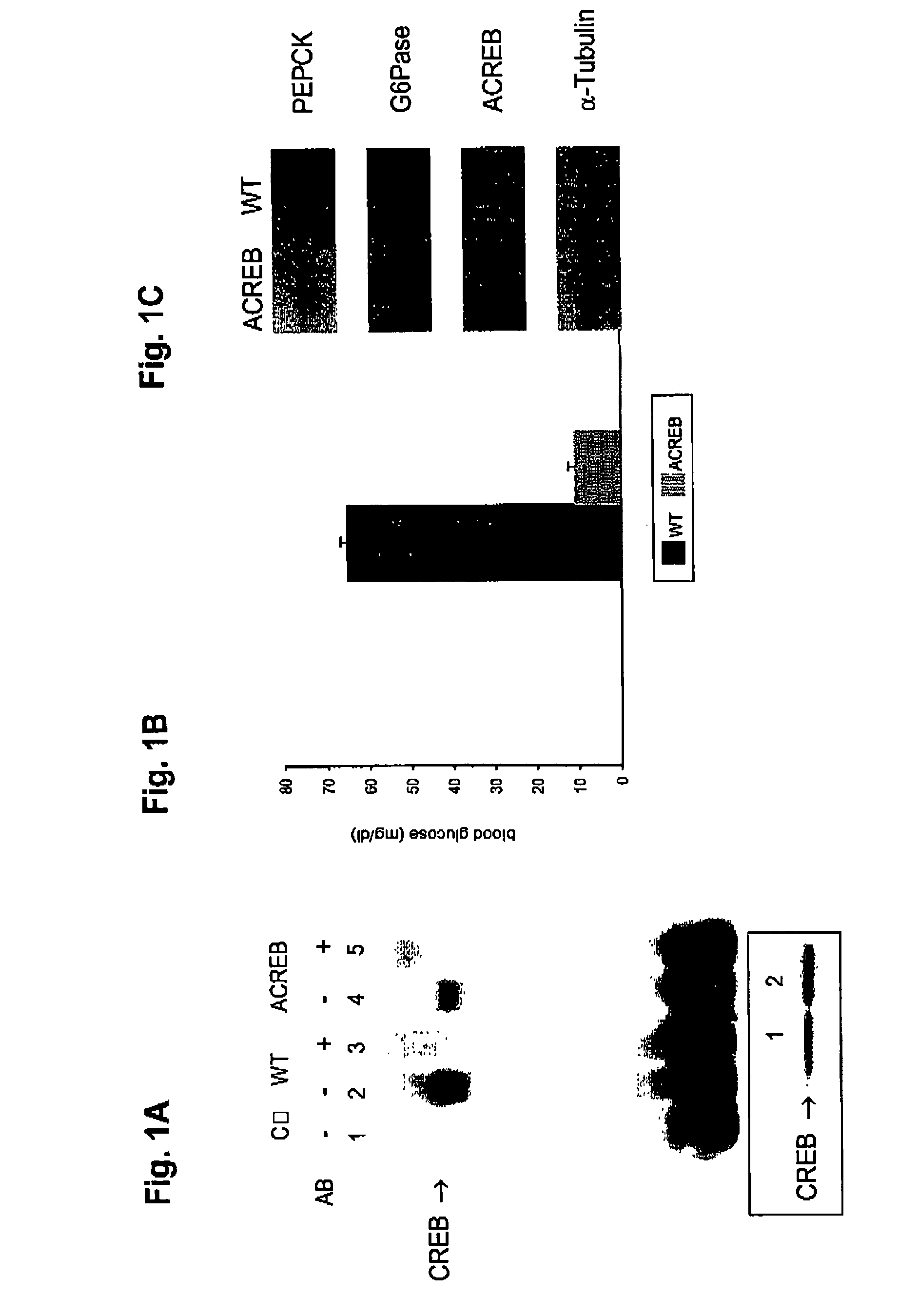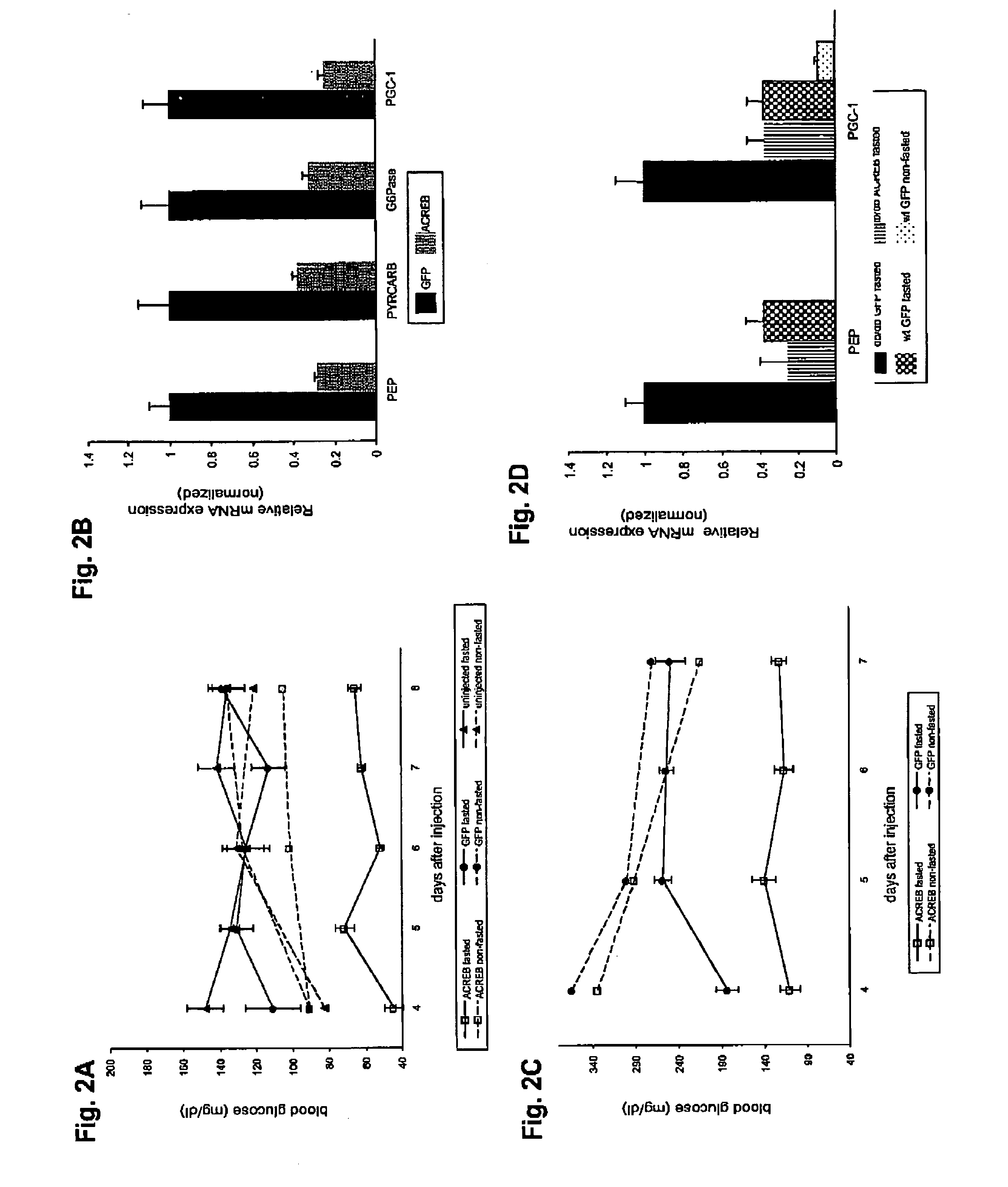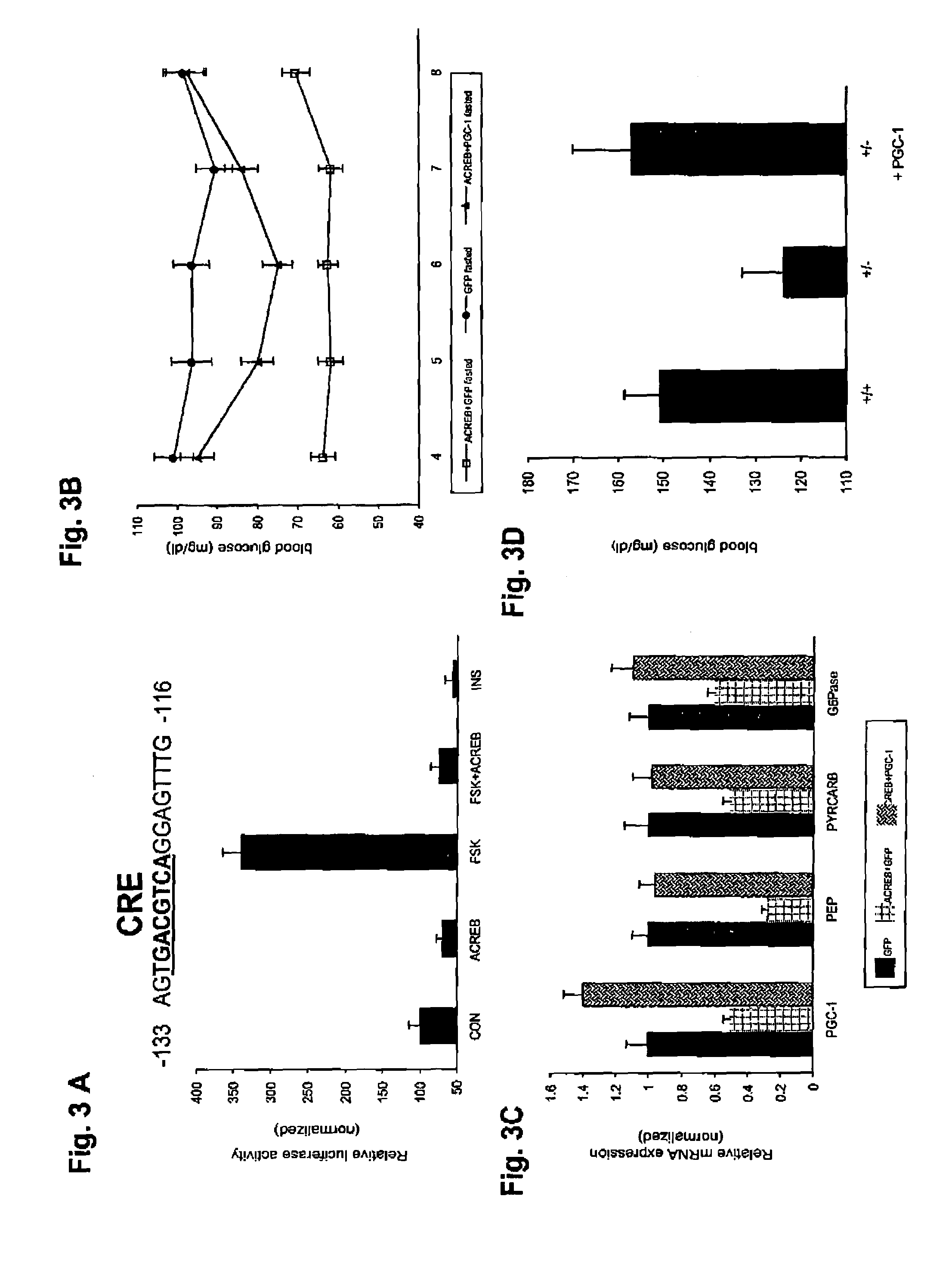Methods for indentifying compounds that modulate gluconeogenesis through the binding of CREB to the PGC-1 promoter
a technology of gluconeogenesis and creb, which is applied in the field of analytical detection methods, can solve the problems of increasing the risk of all of the common late complications, no generally applicable and consistently effective means of maintaining, frequent or severe hypoglycemia, etc., and achieves the effects of accelerating hypoglycemia, and reducing the expression of gluconeogenic enzymes
- Summary
- Abstract
- Description
- Claims
- Application Information
AI Technical Summary
Benefits of technology
Problems solved by technology
Method used
Image
Examples
example i
Regulation of Gluconeogenesis by CREB and PGC-1
[0074]Recombinant adenoviruses. Adenoviruses expressing either ACREB or PGC-1 were generated through homologous recombination between a linearized transfer vector pAD-Track and the adenoviral backbone vector pAD-Easy as described21. pAD-ACREB contained a NotI / SpeI fragment from ZEO-ACREB encoding a Flag-tagged ACREB polypeptide22. pAD-PGC-1 carried the entire murine PGC-1 cDNA encoding all but the c-terminal four amino acids. Both viruses co-expressed the green fluorescent protein (GFP) transcribed from a second independent CMV promoter to monitor viral infection efficiency. Adenovirus coding for GFP only (pAD-GFP) was used as a control in all experiments. Viruses were purified by the CsCl method and dialyzed against PBS buffer containing 10% glycerol prior to animal injections as described23.
[0075]Animal experiments. Male 6-week old C57B16 or db / db mice were obtained from The Jackson Laboratory (Bar Harbor, Me., USA) and maintained on ...
PUM
 Login to View More
Login to View More Abstract
Description
Claims
Application Information
 Login to View More
Login to View More - Generate Ideas
- Intellectual Property
- Life Sciences
- Materials
- Tech Scout
- Unparalleled Data Quality
- Higher Quality Content
- 60% Fewer Hallucinations
Browse by: Latest US Patents, China's latest patents, Technical Efficacy Thesaurus, Application Domain, Technology Topic, Popular Technical Reports.
© 2025 PatSnap. All rights reserved.Legal|Privacy policy|Modern Slavery Act Transparency Statement|Sitemap|About US| Contact US: help@patsnap.com



